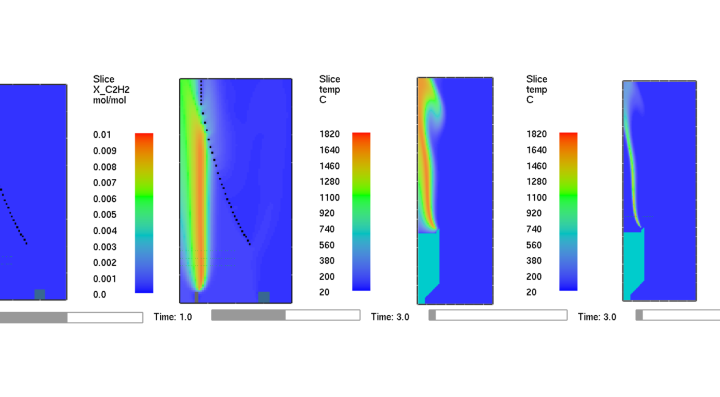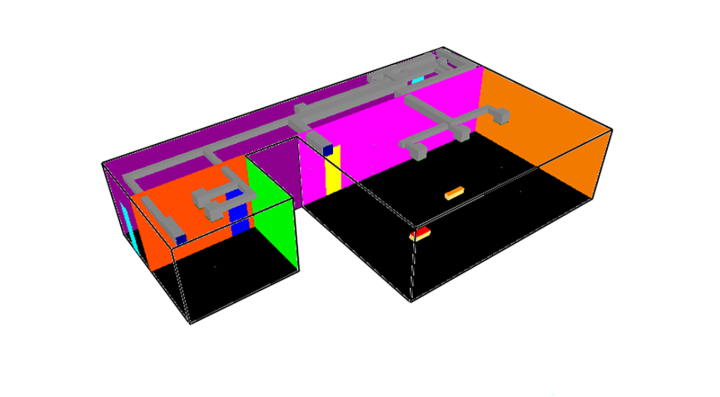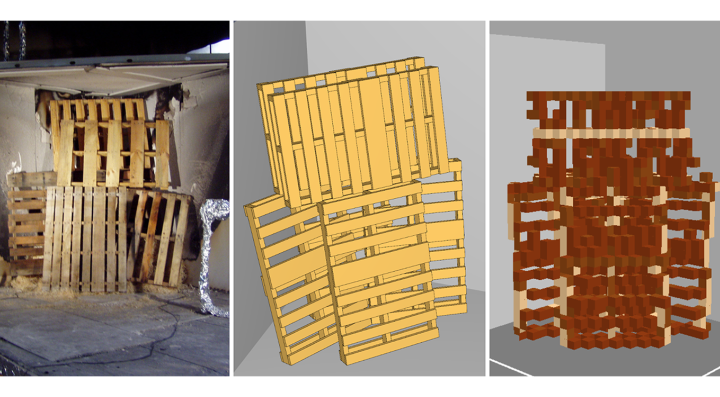
Fire Modeling Development and Validation

- Overview
- Updates
- Resources
Computer fire modeling uses mathematical equations and computer algorithms to predict variables in the fire environment including smoke concentration, temperature, flame position, and heat release rate. This enables the fire safety community of fire protection engineers, fire researchers, and designers of life safety systems to design and analyze fire protection systems, develop training, and understand fire dynamics. A widely used computer fire modeling system includes the Fire Dynamics Simulator (FDS) developed by the National Institute of Standards and Technology (NIST).
Improving Fire Modeling Capabilities of the FDS
The Fire Safety Research Institute (FSRI), part of UL Research Institutes, contributes to the success of FDS through software development and bench and large-scale experiments. Ongoing FDS research efforts by FSRI include:
- Soot measurement experiments: bench- and room-scale experiments characterize soot size distributions and optical properties during fires. The data collected is expected to improve FDS validation metrics for soot density, visibility, and deposition; provide input data for model users; and determine the suitability of current assumptions used when modeling visible light extinction with FDS in sooty environments.
- Detailed fire chemistry: modeling efforts explore the use of skeletal chemical mechanisms along with massively parallel computing to provide detailed insights into fire behavior that are extremely difficult to measure during experiments. These calculations will serve as benchmarks for the development of new FDS submodels.
- Pyrolysis modeling: the following sub-areas of focus contribute to an overall effort to develop robust, grid-independent methods for predicting fire growth and spread:
- Subgrid models for heat transfer:
- FSRI performs numerical simulations and validation studies aimed at improving the approaches used in the FDS for predicting convection heat transfer on engineering grids.
- FSRI develops test plans to make highly detailed heat transfer measurements in canonical fire flow configurations. Data from experiments will inform model development and provide data for future validation efforts.
- Numerical methods for heat transfer and pyrolysis:
- FSRI works towards improving the efficiency and stability of related FDS submodels.
- Validation and input data:
- FSRI leverages the large amount of research conducted to refine methods for providing pyrolysis model inputs and to create validation test cases over a wide range of materials and fire conditions.
- Subgrid models for heat transfer:
This project serves the fire safety community by improving and extending the capabilities and validation basis of FDS.
Published: October 10, 2024










